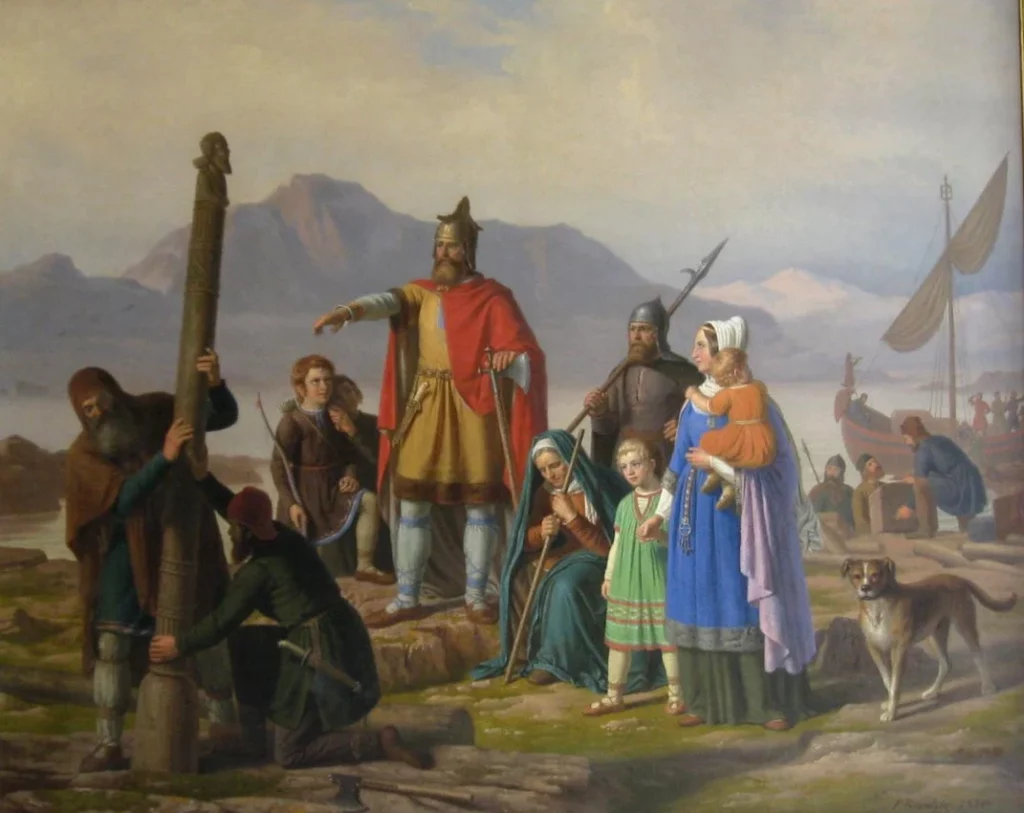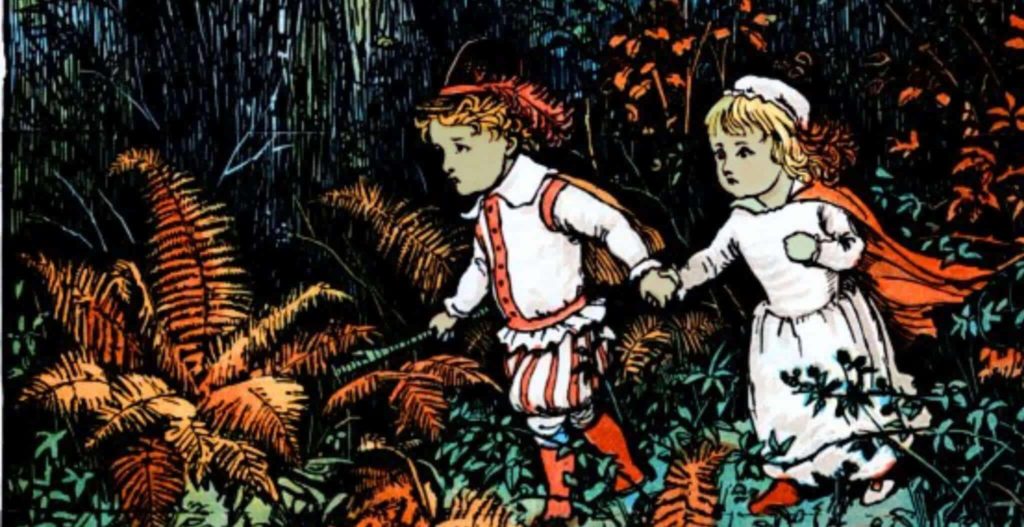Last updated on July 22nd, 2022 at 07:02 pm
The Vikings are a group of people who are often associated with violence and slavery. However, what is not as well-known is the role that slavery played in their culture.
It’s suggested that slavery was fundamental to their society. In this blog post, we will take a closer look at the history of Viking-era slavery and what it may mean for our understanding of this period in history.

Slavery Has Persisted Since the Beginning of Recorded History
Slavery has been around since the beginning of time. It is a practice that allows one human being to own another human being and use them for their benefit. The history of slavery is brutal, filled with violence and abuse. However, there may be evidence that shows that slavery was a keystone to their culture. For example, during their raids, the Vikings took thousands of men, women, and children; they sold them as enslaved people, also known as Thralls, and comprised about 10% of the population.
The Annals of Ulster, an early Irish chronicle, describes a Viking raid in the Dublin in 821 A.D.; they carried off many women into captivity. Another chronicle later emerged from the Arab world in 977 A.D. mentioned a slave trade that extended across the Mediterranean Sea from Spain to Egypt. Finally, another account comes from some archaeological evidence unearthed in areas thought to be Viking slave-trading hubs, like Birka, Hedeby, and Dublin.
In these areas, iron shackles and collars were used to restrain thralls in urban centers and around the harbors. Some scholars argue that this evidence means nothing and could easily mean that the Vikings secured animals in these areas instead. However, the restraints themselves look quite similar to many bonds used on humans throughout history.
The Thralls: A Pillar of Their Economy
The Viking culture is often associated with violence and slavery. However, what is not as well-known is the role that slavery played in their culture. Unfortunately, physical archaeological evidence is hard to come by, but it is believed that many of their slaves came from the British Isles and Eastern Europe.
However, slavery was likely an ongoing institution long before the traditional Scandinavian Vikings came into power. In short, the Vikings made active acquisitions of thralls as a pillar of their economy. In addition, obtaining more thralls was a primary concern during any military campaigns or raids.
With the frequency of their raiding and pillaging, one might believe that the Vikings required a labor force to complete tasks for them or to serve in their military, but this was not always the case. As a result, the thralls may not have played a prominent role in their society as they would at various slave markets.
A Need for Women
However, scholars believe that slaves served the needs of the Vikings in whatever ways they needed. Many historical sources indicate that the treatment of slaves was not ideal and painted the Vikings in a harsher light. For example, Vikings often targeted girls and women during their raids, citing their reliance on sexual slavery and intermarriage.
Historical writings indicate that the Vikings lived in a layered society and practiced polygamy. This suggests that while the noble classes had unfettered access to women, the lower class or poorer men were usually unmarried and had minimal access to women. Poorer men would have targeted female slaves and used them as concubines and wives if they so desired.
In addition to sexual needs and desires, Women were also skilled laborers; women produced high-value goods in most societies. For example, textiles were necessary in the Viking’s cases because they needed material for their ship sails. Women were also valued in the production of agricultural goods, which may account for the remains of the great hall archaeologists found in 1999 in Sanda at a site believed to be a Viking plantation.
In General, Slaves Were Treated Horribly
Many scholars believed that the Vikings were not as humane in treating slaves as other cultures. Researchers like Anna Kjellstrom of Stockholm University mention investigating skeletal remains in places they assumed were Viking-era grave sites in Norway, Sweden, and even Denmark. These skeletal remains showed abuse and decapitation; some written sources indicate that slaves were buried with their dead masters; Viking and Arab chroniclers account for this trend. The enslaved people ended up as sacrifices and followed the master into the afterlife.
Ahmad Ibn Fadlan, an Arab lawyer of the period, mentioned the times he encountered Vikings from Scandinavia and commented on how they treated their females as sex slaves. He continued, noting that the Vikings would leave them as food for the dogs and birds if they died. In addition, slaves were used as workers, cut trees, built ships, and rowed the vessels for the Vikings, especially the men captured as slaves.
Other studies on the remains of slaves support the idea that thralls didn’t eat nearly as well as their masters, primarily consuming fish, while the masters ate hearty meat and dairy diets. In a 14th-century poem, enslaved people were regarded by terrible names like a bastard, sluggard, lout, and stumpy. Despite the gruesome evidence of their brutality, the Vikings did have a class system rooted in their slave population.
The Slave Classes
In reality, servitude to the Viking people wasn’t always forced but even voluntary. For instance, one state of servitude mentions that it was voluntary, but individuals usually entered this service due to financial hardship-like clearing debts. It was also possible to be forced into slavery due to certain crimes where the thrall only served for a fixed timeframe.
Nevertheless, scholars mention that thralls could own nothing, inherit nothing, and leave nothing. They were never paid for their services, but they could keep a small portion of the proceeds if they sold goods for their masters at the market. In this way, it was possible for a thrall to purchase their freedom, but it was sporadic. If their master saw fit, they could release their thralls from service.
Born into Servitude
When children were born to parents who were thralls, the Vikings also took them into slavery. However, if a freeborn man happened to impregnate a woman but declined to acknowledge his child, they would also be enslaved. Unfortunately, just because a thrall was set free, it didn’t mean that they were free to live their life.
All freed men and women were still tied to their former masters and were expected to support them, never fully gaining the rights of freeborn citizens. In general, freed thralls also had lower compensation rights; eventually, a freed thrall’s children and grandchildren would obtain the full rights of the freeborn.
Conclusion
In the Viking world, slavery was a way of life that was integral to their society. However, it is only through recent archaeological discoveries and written accounts that we can begin to understand their culture and how slavery indeed played a role in their everyday lives.
Now, there seems to be more evidence that points to why Vikings raided and pillaged surrounding settlements. Their culture relied heavily on the human captives they brought back. The harsh reality of the Viking Age shows that life and liberty weren’t always attainable for everyone.
If enjoyed this article, you may be interesting in the following:
What was life like for a Roman slave?
What was it like living in a Viking Longhouse?

